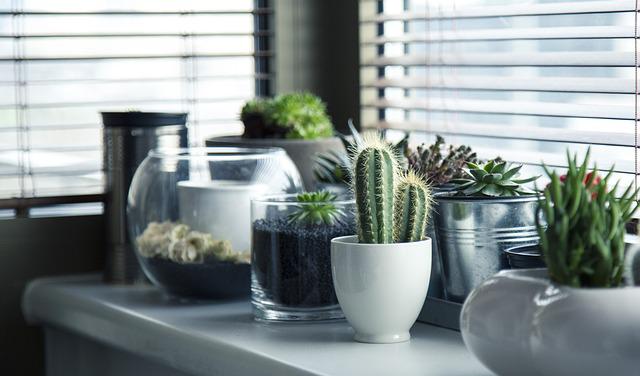If you have always wanted to have a garden, but don’t have the time or space for an outdoor garden, you should consider indoor gardening. It can be a great way to get your green thumb fix and grow some of your favorite plants. However, before you start planting, there are a few things you need to know about successfully maintaining an indoor garden. This blog post will discuss the basics of indoor gardening and provide some tips for keeping your plants healthy and happy.
 |
| A Beginner’s Guide to Successfully Maintaining an Indoor Garden [image: pixabay] |
Create a suitable indoor environment
Lights
One of the most important things to remember when gardening indoors is that plants need light. Most indoor gardens are located near a window so that the plants can get enough natural light. More often than not, homeowners design their indoor garden space near a south-facing window, as this provides the most sunlight. If you don’t have a south-facing window, or if your indoor garden is not located near a window at all, you will need to supplement the natural light with artificial lighting. If you don’t have a lot of natural light in your home, you may need to invest in some grow lights that mimic the sunlight to help your plants to grow. These lights can be found at most home improvement stores. Nevertheless, many other different types of artificial lights can be used for indoor gardening, including fluorescent lights and LEDs.
Water
Another important thing to remember is that plants need water. However, you can’t just water your plants whenever you feel like it. Overwatering is one of the most common problems people have with indoor gardening. Indoor plants typically need to be watered about once a week, but this can vary depending on the plant, the potting mix, and the environment. Be sure to check the specific watering needs of your plant before watering it. Some plants, such as succulents, require less water than others.
The best way to water your indoor plants is to stick your finger in the potting mix to see how dry it is. If the potting mix is dry several inches below the surface, it’s time to water the plant. Just make sure that you are using the right type of potting mix for your plants. Some plants do better in a more sandy mix, while others need a richer potting mix that retains more moisture.
Temperature and humidity
Another important factor to consider when creating an indoor garden is the temperature and humidity of your home. Indoor plants prefer a warm, humid environment. During the winter months, when homes are typically drier, you may need to use a humidifier to help maintain the proper level of moisture in the air. You should also avoid placing your plants near sources of heat, such as fireplaces or radiators. This way, you can maintain a consistent temperature and humidity level for your plants.
Proper ventilation
In addition to the right temperature and humidity, indoor plants also need fresh air. Proper ventilation is important for keeping your plants healthy. Indoor gardens should be located in an area of the house that gets good airflow. If possible, you should open a window or door to allow fresh air into the room regularly. You can also use fans to circulate the air and help ventilate the space.
Fertilizer
Finally, another important aspect of indoor gardening is fertilizer. Just like with watering, you need to be careful not to over-fertilize your plants. Fertilizing too often can damage the roots and make the plant more susceptible to pests and diseases. It’s best to fertilize your plants every two weeks or so. Be sure to use the right type of fertilizer for your plants. Some plants do better with a liquid fertilizer, while others need a granular fertilizer.
Do your research
One of the most important things you can do when starting an indoor garden is to do your research. Not all plants are well-suited for life indoors. When choosing plants for your indoor garden, be sure to select ones that will thrive in the environment you can provide. Consider the amount of light, water, and space you have available before selecting a plant. This way, you can be sure to choose plants that will be happy and healthy in your indoor garden. Rest assured that you will be able to choose from various plant varieties that will fit well in your home.
 |
| [image: pixabay] |

No comments:
Post a Comment
Please Leave a Comment to show some Love ~ Thanks